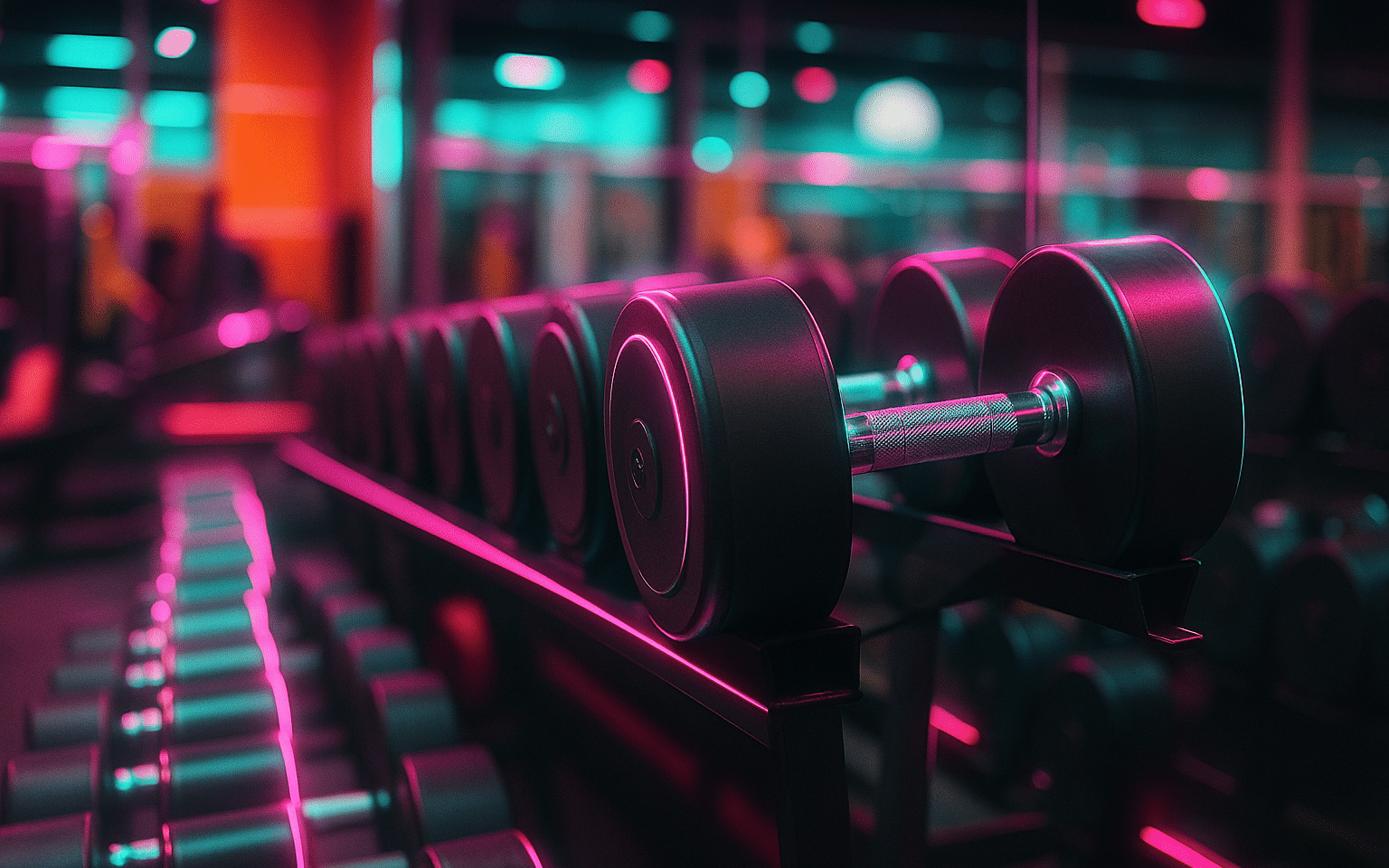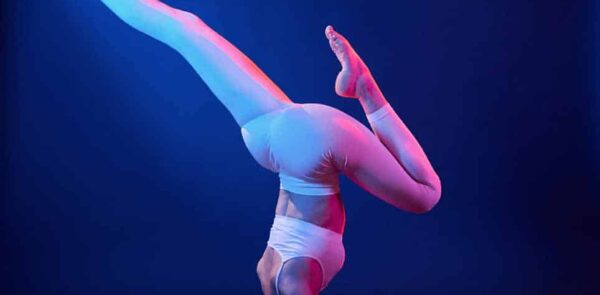
Jump to a section:
At Emulent, we’ve partnered with a variety of businesses in the health and wellness sector, and we’ve seen firsthand how fierce competition can be—particularly for sport and fitness equipment providers. Whether you specialize in home-gym products, professional training gear, or outdoor sports equipment, you must stand out in a market driven by innovation, performance, and rapidly shifting consumer preferences. Establishing a strong brand identity and cohesive marketing strategy is essential for gaining the trust of both everyday fitness enthusiasts and dedicated athletes.
1. Why a Strong Brand Matters in Sport & Fitness
Whether you’re creating specialized recovery tools or general home workout gear, consumers have countless options from large global manufacturers to niche brands. Quality alone won’t guarantee customer loyalty if your brand doesn’t communicate trust, innovation, and a clear vision for helping users reach their goals. Your brand strategy should highlight:
- Credibility and Expertise: Show potential buyers that your equipment is developed or recommended by professional trainers, athletes, or sports science experts. This assures them it’s effective and safe.
- Inspirational Lifestyle Association: Fitness often involves motivation and aspiration. A compelling brand narrative or design aesthetic that energizes and excites customers can spark stronger emotional connections.
- Customer-Centric Focus: People want solutions that address their specific needs—be it losing weight, improving sports performance, or staying active as they age. Show how your brand empowers them on their personal journeys.
- Longevity in a Trendy Market: While the fitness world can see quick shifts in trends, a solid brand identity can transcend fads, building user confidence in your consistency and durability.
A brand that consistently reflects these elements creates raving fans who trust your gear and become vocal advocates, driving organic word-of-mouth in a community that often shares product recommendations online and among peers.
2. Define Your Unique Value Proposition (UVP)
Your UVP sets the tone for why consumers should choose your gear over countless alternatives. Ask yourself:
- What Niche Are You Filling? Maybe you focus on eco-friendly materials, or you specialize in ergonomically designed workout benches for small home spaces.
- Which Athletes or Users Benefit Most? Is your brand best suited for professional sports teams, serious fitness buffs, or casual at-home exercisers seeking an easy routine?
- What Problems Do You Solve? For instance, do your shoes reduce impact for marathon runners, or does your equipment fold up neatly for storage in tight apartments?
Once identified, weave your UVP into everything—from website copy and packaging to social media posts. This consistency helps customers immediately grasp how you address their challenges and enhance their active lifestyles.
3. Build Visual and Verbal Brand Identity
Visual Branding
The fitness world is awash with dynamic, high-energy visuals, so your design choices must hold their own. Consider:
- Logo & Typography: If you cater to elite athletes, a bold, angular typeface can signify intensity. If you serve everyday wellness enthusiasts, a softer palette with modern lines might suit better.
- Color Palette: Vibrant hues like neon greens, energetic oranges, or electric blues can evoke excitement, while neutral blacks and grays convey sleek, professional minimalism. Pick colors that align with your brand’s personality.
- Packaging & Product Aesthetics: Don’t neglect how your equipment looks and feels. Eye-catching packaging or design details can help your gear pop on store shelves or in online listings.
Verbal Branding
Equally important is how you speak to your audience. Think about:
- Taglines or Slogans: A brief, powerful line that captures your mission. For example, “Train Hard, Recover Smart,” if you focus on gear that balances intense workouts with intelligent recovery solutions.
- Brand Voice: If your audience is hardcore athletes, you might use a motivational, edgy tone. If you cater to families or beginners, a more encouraging and approachable voice could resonate better.
- Storytelling: Share your origins—was your brand founded by a professional athlete or a physical therapist who spotted a gap in the market? Such narratives can forge emotional bonds with users who relate to your impetus for invention.
Ensuring your brand’s visual and verbal elements align fosters a recognizable presence that stands out in an often crowded, flashy sector.
4. Leverage Social Media and Influencer Collaborations
Focus on User Engagement
Fitness thrives on community and shared inspiration. Social media can be your conduit for forging that community:
- Workout Challenges & Hashtags: Host monthly or weekly challenges using a branded hashtag. Encouraging customers to post their progress with your equipment draws attention from their peer networks.
- Live Tutorials or Q&A Sessions: Demonstrate correct form, new usage tips, or training routines through Facebook Live or Instagram Live. Real-time interaction fosters trust and brand attachment.
- Highlight User-Generated Content (UGC): Re-share photos or videos of satisfied customers using your gear. UGC not only boosts authenticity but also shows prospective buyers how your products fit into real routines.
Influencer or Athlete Partnerships
Aligning with fitness influencers, professional athletes, or respected trainers can amplify credibility. Choose collaborators whose audience and values match your brand. Strategies include:
- Sponsorships: Provide free equipment to a local sports team or a popular personal trainer. If they genuinely love your gear, they’ll promote it on their platforms.
- Affiliate Programs: Offer influencers a commission for sales they drive through referral links. This structure motivates them to share your products widely and often.
- Guest Takeovers: Invite an athlete or coach to handle your social media for a day, showing their personal workouts or tips with your equipment. This fresh perspective can captivate your followers.
Fostering these relationships can open your brand to targeted, engaged communities that already trust the influencer’s recommendations.
5. Harness Content Marketing for Educational Value
Address Users’ Pain Points and Goals
People buy fitness gear to solve problems—improving strength, losing weight, training for a race, or rehabilitating an injury. By offering helpful resources that touch these topics, you position yourself as a supportive guide:
- Blog Series & E-Books: Cover “Exercises Using Our Resistance Bands to Strengthen Your Core” or “Designing a Home Gym: Key Equipment Essentials.” Offer downloadable PDFs or a short e-book that visitors can access after providing email addresses.
- Video Demonstrations: Show how to assemble equipment, or demonstrate a 15-minute workout routine using your gear. High production value is nice, but authenticity and clarity matter more.
- Free Training Plans: If you sell running gear, craft a basic half-marathon plan. If you specialize in at-home Pilates equipment, provide a weekly or monthly routine. Tie these guidelines back to using your products effectively.
When you consistently share insightful content, customers see you not just as a vendor, but as an ally in their fitness journey.
SEO and Community Forums
Content can also drive organic search. Optimize each piece for relevant keywords—like “best home workout bench,” “advanced rehab exercises,” or “running shoe replacement intervals.” Additionally, engage on community platforms:
- Reddit or Quora Threads: If relevant subreddits (r/fitness, r/running, r/gym) allow it, answer questions knowledgeably. Subtly mention your brand if it’s helpful, not as spam. Genuine, value-driven responses can funnel traffic to your site.
- Facebook Groups & Local Forums: Join groups dedicated to local running clubs, crossfit communities, or general wellness. Share your blog links or product tips when appropriate.
This approach organically introduces your brand to potential buyers who are actively searching for solutions or advice related to your niche.
6. Strengthen B2B and Retail Partnerships
Collaborate With Gyms and Trainers
If your gear suits commercial settings (like heavier-duty machines or specialized rehab equipment), forging relationships with gyms or training studios can land bulk orders or consistent referrals:
- Bulk Purchasing Deals: Offer volume discounts or extended warranties for studios equipping multiple training stations with your brand.
- Trainer Affiliate Programs: Let personal trainers earn a percentage when they recommend or bundle your gear into their coaching packages. Many trainers influence the purchasing decisions of their clients.
- Demo Events: Provide sample equipment for a fitness class, let attendees try out new items, and purchase them on-site at a special rate. This “try-before-you-buy” approach can boost conversions.
Retail and Online Marketplace Collaborations
- Local Sports Retail Stores: Negotiate shelf space or in-store displays. If staff is well-briefed on your product’s unique features, they can effectively upsell to customers who want superior performance or design.
- eCommerce Platforms: On Amazon or specialized sports marketplaces, optimize product listings with high-res photos, thorough descriptions, and strong brand messaging. Solicit reviews from early buyers to build credibility.
- Pop-Up Shops or Trunk Shows: If you have a new product line, partnering with a local retailer for an exclusive launch event can draw media and consumer attention, culminating in immediate sales and brand buzz.
Through such partnerships, you expand your presence beyond direct-to-consumer sales, amplifying brand recognition and capturing additional segments of the market.
7. Gather Feedback, Measure Results, and Refine
Monitor Key Metrics
To keep advancing your brand strategy, track performance markers like:
- Website Traffic & Conversions: Notice which content pieces or ads drive consistent inquiries or purchases. Identify pages with high bounce rates to see where messaging might be unclear.
- Social Engagement: Are you gaining stable growth in followers and interactions on Instagram Reels, TikTok fitness challenges, or YouTube workout guides?
- Sales Growth & Repeat Purchases: If you sell consumable accessories (e.g., resistance bands) or new product lines, see if first-time buyers eventually become repeat customers. Loyal fans often indicate strong brand alignment.
- Influencer or Partner ROI: For collaborations, analyze referral links or coupon codes usage. This data reveals which partnerships yield tangible results and which might need reevaluation.
Adapt and Iterate
As the fitness industry evolves with new trends—like the rise of at-home connected equipment or niche workout styles—remain flexible:
- Product Refreshes: If your brand targets home-gym users, monitor user feedback about features or design improvements. Announce updated versions that address user suggestions.
- Seasonal Campaigns: Market weight-loss gear around New Year’s resolutions, or summer workout gear leading up to beach season. Tailoring promos to calendar-based motivations can spark higher engagement.
- Continuous Innovation: Assess if expansions—like an accompanying fitness app or subscription-based workout programs—would enhance your brand. Infuse new ideas that consistently re-energize your audience’s interest.
By analyzing real-world data and listening to consumer feedback, your brand strategy remains on track, ensuring that you stay relevant amid fast-paced changes in the fitness landscape.
Conclusion: Building a Strong Fitness Equipment Brand for the Long Term
In the sport and fitness equipment realm—where performance, aesthetics, and user engagement intertwine—developing a thoughtful brand strategy is the cornerstone for sustained growth. By clarifying your unique value proposition, crafting compelling visual and verbal identities, and engaging consumers through community-building content, you foster trust and loyalty. Collaborations with trainers, gyms, and digital influencers further expand your reach, while consistent innovation and data-driven adaptation keep your brand positioned at the forefront of fitness trends.
At Emulent, we’re passionate about helping sport and fitness equipment businesses build marketing strategies tailored to their distinct strengths. If you’re ready to refine your brand positioning, embrace new channels, or deepen audience engagement, contact our team. We’ll partner with you to construct a marketing plan that boosts your brand to the next level in a demanding, vibrant marketplace.
